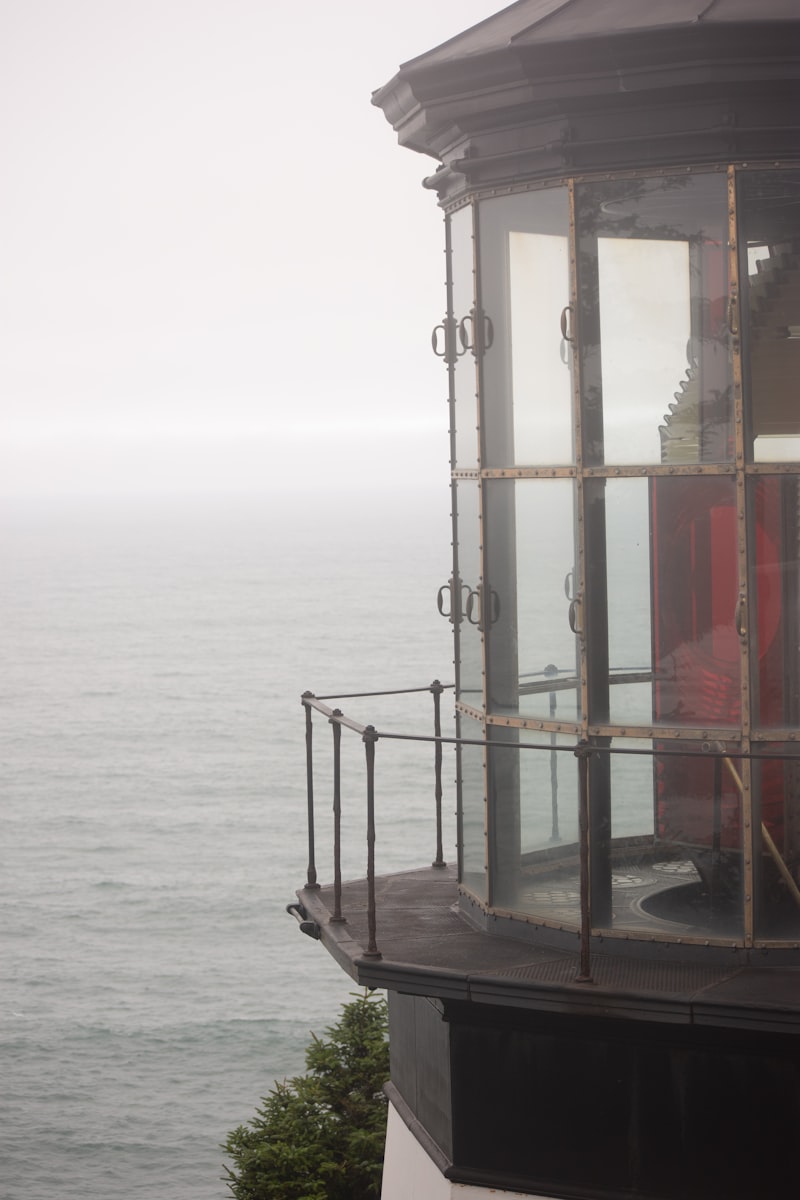Have you ever wandered through the streets of America’s cities and found yourself mesmerized by the architecture? Each city tells its own story through its buildings, reflecting a rich tapestry of history, culture, and innovation.
Take a stroll through New York City, and you’ll encounter a blend of old and new architectural wonders. From the iconic Empire State Building with its art deco design to the modernist marvel of the One World Trade Center, the city skyline is a testament to human creativity across the decades.
Travel west to Chicago, where the birth of the skyscraper revolutionized urban architecture. The Windy City boasts the Willis Tower (formerly Sears Tower), once the tallest building in the world, and the elegant Wrigley Building, a symbol of Chicago’s architectural prowess.

In the heart of Washington, D.C., neoclassical structures like the Capitol Building and the White House stand as symbols of democracy and governance. The city’s careful urban planning ensures that each monument and building plays a role in the nation’s narrative.
San Francisco’s unique architecture is characterized by its Victorian houses nestled among modern high-rises. The Golden Gate Bridge itself is an architectural marvel, blending seamlessly with the city’s natural landscape.
From the southern charm of New Orleans’ French Quarter with its wrought-iron balconies to the sleek skyscrapers of Houston, every city in America offers a unique architectural experience. Whether you’re exploring the historic streets of Boston or the futuristic skyline of Seattle, each cityscape invites you to delve into its architectural story, to marvel at its engineering feats, and to ponder the cultural influences that have shaped its skyline.
America’s cities are not just collections of buildings; they are living testaments to the creativity and resilience of human endeavor. As you explore them, take a moment to appreciate the intricate blend of past and present that defines their architectural identity.
Iconic Skylines: Unveiling the Architectural Wonders of America’s Urban Landscapes
New York City, often hailed as the city that never sleeps, showcases a skyline that is both historic and ever-evolving. The Empire State Building, an Art Deco masterpiece, stands as an enduring symbol of New York’s resilience and ambition. Its pinnacle offers breathtaking views of the bustling city below, a panorama that captures the essence of Manhattan’s energy.
Moving westward, Chicago’s skyline paints a different picture of architectural innovation. The Willis Tower, formerly known as the Sears Tower, held the title of the world’s tallest building for decades. Its bold design, with its series of setback tiers leading to a dramatic peak, remains an iconic representation of Chicago’s industrial past and modern aspirations.
On the West Coast, San Francisco’s skyline is defined by the majestic silhouette of the Golden Gate Bridge, an engineering marvel that spans the bay and connects the city to its northern neighbors. The bridge’s distinctive orange hue against the backdrop of fog-draped hills is a sight that captures the imagination of locals and visitors alike.
In the heartland, cities like Dallas and Houston boast skylines dominated by a blend of glass and steel, reflecting their status as centers of commerce and culture. Each building tells a story of growth and adaptation, from historic landmarks to contemporary high-rises that push the boundaries of architectural possibility.
Across America, from coast to coast, these iconic skylines stand as symbols of creativity, progress, and the human spirit’s ability to shape its environment. They are more than just collections of buildings; they are living, breathing testaments to the dreams and ambitions of generations past and present.
Hidden Gems: Discovering the Lesser-Known Architectural Marvels Across America
Ever wondered about the hidden architectural gems scattered across America? Beyond the famous landmarks that draw millions each year, there are lesser-known marvels waiting to be discovered. These hidden gems tell stories of creativity, history, and local pride, each with its own unique charm and allure.
Imagine stumbling upon a quaint Victorian mansion tucked away in a small town, its intricate details and colorful facade standing in stark contrast to the modern buildings around it. Or finding a stunning Art Deco theater in a bustling city center, its geometric shapes and bold colors a testament to a bygone era of glamour and innovation.
These architectural wonders may not always make it into travel guides or postcards, but they capture the imagination of those who seek them out. They are like hidden treasures waiting to be unearthed, rewarding the curious traveler with a glimpse into America’s diverse architectural heritage.
Take, for example, the Bavinger House in Norman, Oklahoma. Designed by architect Bruce Goff in the 1950s, this organic masterpiece blends seamlessly with its natural surroundings, featuring spiraling forms and unconventional materials that challenge traditional notions of home design.
Or consider the Lovell Health House in Los Angeles, California, an early example of International Style architecture in America. Designed by Richard Neutra in 1929, its minimalist aesthetic and emphasis on functionality paved the way for modernist architecture in Southern California.
These hidden gems are more than just buildings; they are symbols of innovation, craftsmanship, and the human spirit. They remind us that beauty can be found in unexpected places and that exploring off the beaten path can be incredibly rewarding.
Next time you travel across America, consider veering away from the well-trodden tourist paths. Seek out these hidden architectural marvels and embark on a journey of discovery. Who knows what hidden treasures you might find?
From Gothic to Modern: A Journey Through the Diverse Architectural Styles of America
America’s architectural landscape is a rich tapestry woven with diverse styles that span centuries of history. From the soaring spires of Gothic cathedrals to the sleek lines of modern skyscrapers, each style tells a story of its era and influences.
Gothic architecture, originating in medieval Europe, found its way to America in the 19th century. Characterized by pointed arches, ribbed vaults, and flying buttresses, Gothic buildings like the Washington National Cathedral in Washington, D.C., evoke a sense of grandeur and spiritual awe. These structures stand as enduring symbols of craftsmanship and devotion, drawing visitors to marvel at their intricate details and towering heights.
Moving into the 20th century, America embraced the Art Deco movement, marked by geometric shapes, bold colors, and lavish ornamentation. Iconic examples such as the Chrysler Building in New York City epitomize the Art Deco style, with its stainless steel crown and setback skyscraper design. Art Deco reflected the exuberance of the Jazz Age and remains a beloved aesthetic in cities across the country.
The mid-20th century saw the rise of Modern architecture, characterized by simplicity, functionality, and a rejection of ornamentation. Architects like Frank Lloyd Wright pioneered organic design principles, integrating buildings harmoniously with their natural surroundings. Wright’s Fallingwater in Pennsylvania is a testament to this philosophy, with its cantilevered terraces and integration with the waterfall landscape.
As America progressed into the 21st century, architecture became increasingly diverse and experimental. Contemporary styles blend elements of sustainability, technology, and cultural diversity. Cities showcase a mix of glass skyscrapers, adaptive reuse projects, and eco-friendly designs, reflecting both aesthetic preferences and practical innovations.
Each architectural style in America’s history speaks volumes about the societal values, technological advancements, and artistic trends of its time. From the awe-inspiring Gothic cathedrals to the innovative skyscrapers of today, these buildings continue to shape our urban landscapes and inspire admiration for the creativity and craftsmanship of architects past and present.
Revitalizing Heritage: How Historic Buildings Shape America’s Urban Identity
Historic buildings stand as silent storytellers of America’s rich past, each brick and facade echoing tales of bygone eras. These architectural gems not only preserve history but also play a crucial role in shaping the vibrant identities of American cities today.
Imagine strolling down the bustling streets of New York City or wandering through the charming avenues of Charleston. Among the towering skyscrapers and modern complexes, historic buildings stand like anchors, connecting the present with the past. They are not mere structures but living remnants of a time when craftsmanship and artistry thrived.
Take, for instance, the iconic Flatiron Building in Manhattan. Its triangular shape and Beaux-Arts style are not just architectural wonders but symbols of New York’s resilience and innovation. Similarly, in San Francisco, the Painted Ladies of Alamo Square paint a picturesque scene against the backdrop of the city skyline, embodying the Victorian elegance that defines the city’s charm.
But these buildings are more than just landmarks; they are catalysts for cultural revival and economic growth. Cities across America have recognized the value of preserving their historic fabric, not only for tourism but also for community pride and identity. Restoration projects breathe new life into neglected structures, transforming them into vibrant hubs of activity, from boutique hotels to creative workspaces.
Moreover, historic preservation isn’t merely about nostalgia; it’s about sustainability and smart urban planning. By repurposing existing buildings, cities reduce environmental impact and foster a sense of continuity in rapidly evolving urban landscapes. The adaptive reuse of historic structures not only preserves embodied energy but also encourages a more sustainable approach to urban development.
In essence, historic buildings are more than architectural relics; they are guardians of America’s urban identity. They remind us of where we came from and inspire us to envision where we are headed. As cities evolve and grow, these timeless structures continue to shape narratives, spark imagination, and leave an indelible mark on the hearts of those who encounter them.
Innovative Designs: The Futuristic Architecture Reshaping America’s Cityscapes
Have you ever walked through a city and found yourself marveling at the striking buildings that seem to defy conventional architecture? These futuristic structures are not just feats of engineering but also artistic masterpieces that redefine the skyline of America’s urban landscapes.
In cities like New York, Los Angeles, and Chicago, futuristic architecture is becoming increasingly prevalent. Architects and urban planners are pushing the boundaries of traditional design to create buildings that are both functional and visually stunning. These structures often feature sleek, metallic facades, asymmetrical shapes, and innovative use of materials like glass and steel.
One iconic example is the One World Trade Center in New York City, standing tall with its shimmering glass exterior and unique geometric design. It symbolizes resilience and innovation, embodying the spirit of America’s recovery and progress.
Moreover, cities like San Francisco are embracing sustainable architecture, integrating green spaces, solar panels, and eco-friendly materials into their skyscrapers. These eco-conscious designs not only reduce environmental impact but also contribute to a healthier urban environment.
But what makes these futuristic designs truly awe-inspiring is their ability to blend seamlessly with the cityscape while standing out as landmarks of modernity. They evoke a sense of wonder and curiosity, prompting us to envision what the future holds for urban living.
Imagine walking down the streets of downtown Seattle, surrounded by buildings that seem to reach for the sky with their daring shapes and vibrant colors. It’s like stepping into a scene from a sci-fi movie, where architecture becomes a form of art that shapes our perception of space and time.
As cities continue to evolve, so too will their architectural landscapes. The future promises even more daring designs that challenge our notions of what buildings can be. From sustainable skyscrapers to futuristic cultural centers, America’s cityscapes are poised to become playgrounds for architectural innovation.
This article aims to capture the reader’s imagination by describing the impact of futuristic architecture on American cities, using engaging language and vivid descriptions to maintain interest throughout.
Green Cities: Exploring Sustainable Architecture Practices Across America
America is increasingly embracing sustainable architecture practices, transforming urban landscapes into green cities that prioritize environmental stewardship and community well-being. From coast to coast, cities are implementing innovative designs and technologies to reduce carbon footprints and enhance quality of life.
In San Francisco, skyscrapers adorned with solar panels and rooftop gardens exemplify the city’s commitment to sustainability. These green roofs not only provide insulation but also absorb rainwater, reducing runoff and urban heat island effects. Residents enjoy improved air quality and lower energy costs, thanks to buildings designed to harness natural light and ventilation.

Moving eastward, Chicago stands out for its pioneering use of green infrastructure. The city has integrated permeable pavements and bioswales into its streetscape, allowing rainwater to filter naturally into the ground instead of overwhelming sewer systems. This approach mitigates flooding and pollution while replenishing groundwater supplies essential for urban resilience.
In the heart of New York City, architects are revitalizing old warehouses into eco-friendly lofts and offices. By repurposing existing structures, the city reduces construction waste and preserves historical character while promoting energy efficiency through smart HVAC systems and sustainable materials.
Down south in Austin, Texas, sustainable housing developments are on the rise. Builders prioritize LEED certification and passive solar design to optimize energy use year-round. Rainwater harvesting systems and native landscaping further minimize environmental impact, fostering a sense of harmony between urban development and natural ecosystems.
As cities across America strive for greener futures, collaboration between architects, urban planners, and policymakers becomes crucial. Together, they innovate and implement solutions that not only combat climate change but also create vibrant, resilient communities where people thrive in harmony with nature.
Frequently Asked Questions
Which American cities are famous for their diverse architectural landmarks?
Discover which American cities are renowned for their diverse architectural landmarks with our concise guide. Explore cities like New York, Chicago, and San Francisco known for their iconic skyscrapers, historic buildings, and unique architectural styles.
What are some iconic architectural styles found in American cities?
Discover the iconic architectural styles that shape American cities, from the sleek Art Deco skyscrapers of New York City to the charming Victorian homes of San Francisco. Explore the diverse influences, such as Gothic Revival and Mid-Century Modern, that define the architectural landscapes across the United States.
What are the key features of sustainable architecture seen in US urban areas?
Discover the key features of sustainable architecture in US urban areas, emphasizing energy efficiency, use of renewable materials, green roofs, and integration of natural light and ventilation.
How does urban planning shape the architectural identity of American cities?
Urban planning significantly influences the architectural identity of American cities by defining zoning regulations, public spaces, and building aesthetics. It shapes the skyline, encourages specific architectural styles, and promotes sustainable development.
How has historical heritage influenced modern city architecture in the USA?
Discover how historical heritage shapes contemporary city architecture across the USA. Explore the profound impact of past styles, materials, and urban planning principles on today’s cityscapes.



